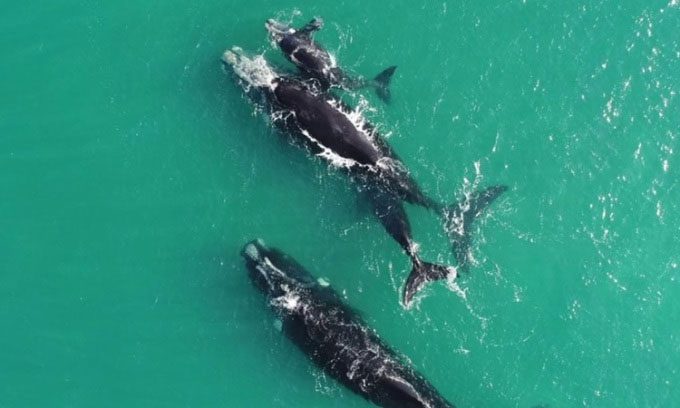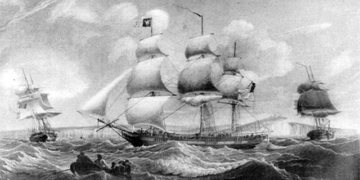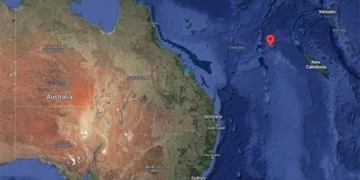A study published in the journal Mammalian Biology by the University of Western Australia (UWA) reveals that young southern right whales sometimes steal milk from females that are not their biological mothers, according to a report by Newsweek on January 24.
“Milk-stealing behavior has been observed in seals and terrestrial mammals, including deer, reindeer, and giraffes, but it has never been seen in large whales,” said PhD candidate Kate Sprogis from UWA’s Oceans Institute and School of Biological Sciences. “The behavior we observed off the southern coast of Australia is a direct and intentional action from the calf and a non-biological mother.”

Young southern right whales sometimes steal milk. (Photo: Perth Now).
The southern right whale inhabits the Southern Hemisphere, migrating between feeding areas as the seasons change, according to the National Oceanic and Atmospheric Administration (NOAA). Their lifespan is likely similar to that of the northern Pacific and northern Atlantic right whales, living at least 70 years. Female whales give birth every 3 to 4 years with a gestation period lasting about a year. Calves typically spend their first year nursing with their mothers.
It is easy to understand why stealing milk occurs, as this behavior can provide additional milk and nutrients for the calves. However, it negatively impacts their biological mothers, as they need to provide milk for their own offspring. This is because the mothers do not forage for food until the nursing period is over.
According to Sprogis, mother whales cannot replenish their lost energy reserves. At the end of the nursing period, the breastfeeding mother must migrate back to feeding areas. For southern right whales, this is a long migration journey from Australia to the sub-Antarctic islands or Antarctica, where female whales replenish their energy by feeding on small invertebrates such as krill and mollusks.
This finding is significant as southern right whales are threatened under the Australian Environment Protection and Biodiversity Conservation Act. Understanding how calves develop is essential to conservation efforts.
Southern right whales face several threats, including population decline. Before the 1960s, they were hunted, resulting in a dramatic drop in numbers. Since then, the population has been recovering very slowly. They are at risk of entanglement in fishing gear, which affects their swimming and foraging abilities. They also face dangers from shipping traffic, habitat destruction, and climate change.


















































